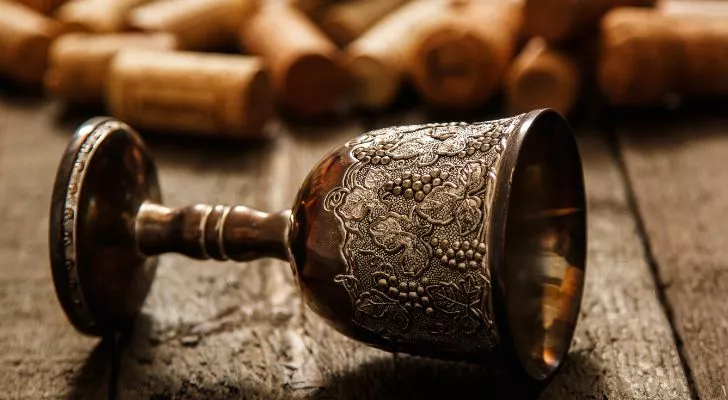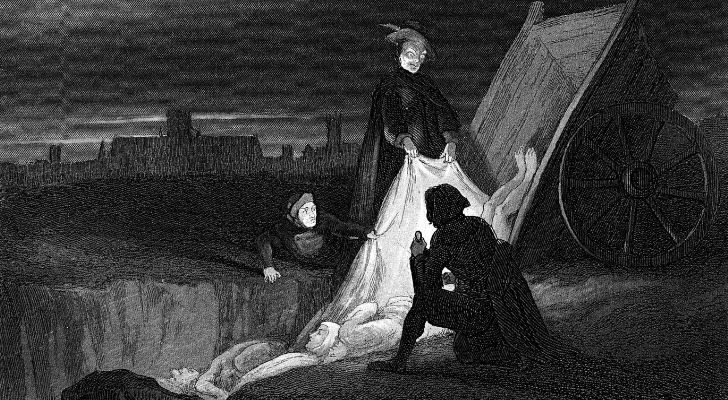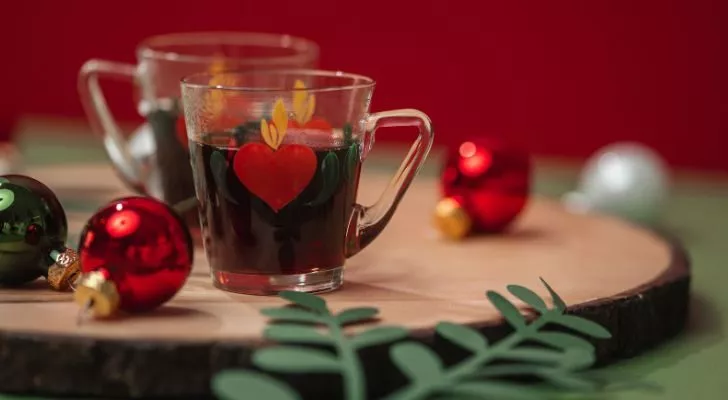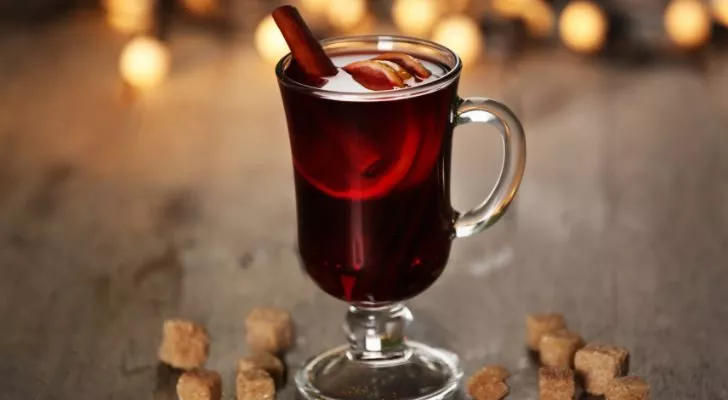Mulled wine is a festive classic, but have you ever mulled over the origins of this spiced yuletide beverage?
Have you ever wondered who was the first to brew this classic Christmas tipple? And why should we be thanking Charles Dickens for it?
From the first English recipe to the most expensive glass in the world, here are ten tantalizing facts about mulled wine to wrap your taste buds around!
The first mention of mulled wine was in a play written over 2,000 years ago.

Written in the 2nd Century BC by Roman playwright Titus Maccius Plautus, the comedy Curculio (also called The Forgery) holds the earliest known reference to mulled wine.
In a scene where the character of Curculio is talking to himself about the fellows around him, he says: “You may always see them enjoying themselves in the hot liquor shops; when they have scraped up some trifle, with their covered pates they are drinking mulled wine.”
Sounds not that dissimilar to modern times, no?
The Ancient Greeks drank mulled wine to keep warm.

We all know the ancient Greeks were into their wine, but sometimes their harvests wouldn’t go exactly to plan.
So, to make the most of a bad batch of vino, they would add herbs and spices to make it more palatable, then heat it to help warm their bodies throughout the upcoming cold months.
The first recipe written in English came from the Middle Ages.

The Forme of Cury, a medieval cookery book from Englandwritten in 1390, holds the first English recipe for spiced winey goodness.
Grinding together classic spices like cinnamon, ginger, and cloves, the recipe also calls for the not-so-classical addition of long pepper, marjoram, and grains of paradise.
Mulled wine was used as a medicine against the Black Plague.

Between 1346 and 1353, there were A LOT of crazy remedies for the Bubonic Plague… and mulled wine was one of them.
Referred to then as the ‘Four Thieves Vinegar,’ wine, vinegar, or apple cider was mixed with spices such as sage, clove, and rosemary to make a potion that was said to stop the spread of the disease.
The world record for the largest pot of mulled wine is over 537 gallons.

On February 28, 2016, the Guinness Book of Records awarded Alessandro De Dea and Fabrizio Vigilante the record for the Largest Vessel of mulled wine ever brewed.
The pair mixed their gargantuan concoction in a vast 2034-liter pot over an open fire in Falcade, Italy, whilst the town folk cheered them on.
Charles Dickens mentions mulled wine in A Christmas Carol.

It would seem that Charles Dickens was a fan of the festive tipple, as he references a version called the Smoking Bishop in his 1843 novel, A Christmas Carol.
Before the Victorian era, recipes only called for spices to be added to wine. But the Smoking Bishop made adding citrus a popular thing to do.
National Mulled Wine Day is not in December.

While mulled wine might bring cold winter nights to mind, Mulled Wine Day is celebrated every year on March 3 across the USA and UK.
The day is spent experimenting with new flavors and techniques before drinking it all down with friends and loved ones.
The Swedish have mulled wine parties.

Traditionally known as Glögg, this Swedish version of mulled wine is integral to the country’s run-up to the festive season.
Made with the addition of almonds and raisins, Glögg is typically served in small glasses at large gatherings. It is then encouraged that you ‘glogg’ your way from one party to the next.
Greece has a version of mulled wine made with white wine called krasomelo.

Krasmelo, or “oinomelo”, is a popular mulled wine recipe made throughout Greece, and yes, it’s made with white wine instead of red.
Meaning Honey Wine, Krasmelo features familiar ingredients such as cinnamon and citrus but also includes lots of honey to give it its sweetness.
The world’s most expensive glass of mulled wine costs over $70.

Created by respected food and drink writer Matthew Fort, the modestly-named ‘Cinnamoney Spiced Wine’ can be found in Searcys Restaurant & Champagne Bar at St Pancras International, London.
This little glass of Christmas cheer will set you back a whopping $73.77 (or £60) and is made with some quite fancy vinos, including Bordeaux, Champagne, and Muscat.
It would seem that this spicy seasonal drink really is soaked in history. Once used to warm the body and later to protect it from the plague, mulled wine is certainly not your average winter warmer.
So, next time you are clutching a hot, steamy cup of Smoking Bishop or Glögg (whether you paid $73 for it or not!), let’s raise a glass of festive cheer to the Romans, the Greeks, and Charles Dickens – hear, hear!


















